Mold in Carpet
Carpets can make your home look more tidy and appealing. With a variety of color options, pile heights, and patterns, your choice of carpet adds a unique personal touch and an authentic feel to your room’s overall appearance.
Apart from making your space look more pleasant, carpet floors also cushion your feet from hard or concrete flooring, making it more comfortable for you to walk and stand on.
Compared to other materials like hardwood or tile, carpets also assist in insulating your home. Thicker carpets make room temperatures much warmer, and thus, they help you save on electricity bills and cut down on natural gas usage to maintain a cozy atmosphere.
Carpeting also works as a sound barrier to block sound transmissions between rooms, making your home more peaceful and quiet. It also goes without saying that carpeted surfaces increase safety by preventing slips and falls.
Given all these advantages of carpet floors, it is important to understand that using carpets in your home or office requires a good amount of maintenance, not only to preserve their appearance but also to ensure the good health of occupants.
While clean, new carpets can make your room look beautiful, dirty carpets can pose numerous threats to your health and well-being. They may look harmless to the naked eye, but beneath the surface, carpets can contain hundreds of allergens and pathogens from dust mites and pet dander to mold spores, bacteria and animal feces.
Worried About Mold in Your Carpet? Get a Free Inspection!
Mold in carpet can be a hidden health hazard, causing allergies, respiratory issues, and more. Don’t let it go unchecked! Contact Mold Busters for a free virtual mold inspection. Our experts will provide a thorough assessment and actionable plan to tackle any mold issue, ensuring your home is safe and healthy. Act now to protect your space!
Contents
How Dirty Carpets Affect Your Health
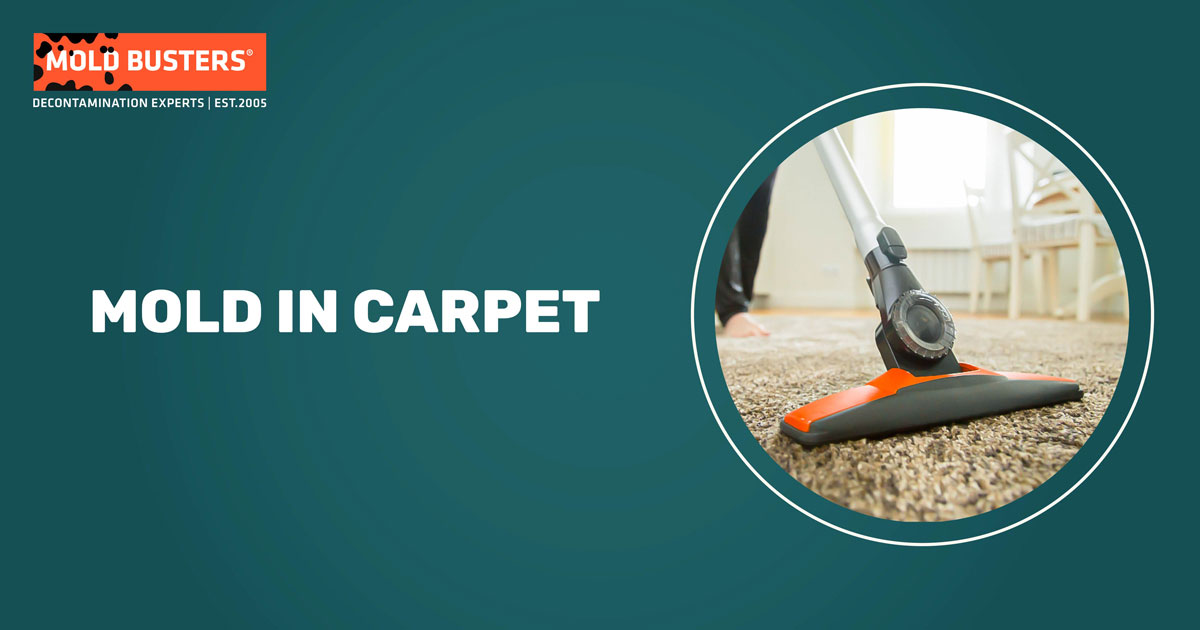
In 1980, the World Health Organization (WHO) coined the term Sick Building Syndrome (SBS) to refer to the unhealthy environmental factors in the workplace that undoubtedly affect the health of employees.
According to Dr. Berry Michael, Deputy Director of the Environmental Criteria and Assessment Office, soiled and filthy carpets are one of the main perpetrators of SBS, contributing to indoor air pollution and threatening the health of workers.
Rugs and carpets trap allergens and are home to microorganisms that can release harmful fumes into the air you breathe. They accumulate bacteria colonies, chemical irritants, and microorganisms like mold that can cause both short-term and long-term health effects.

Once these pathogens are inhaled, they can lead to the development of the following health issues:
Allergies
Dust mites breed on dirty carpets due to the presence of bacteria, fungi, and dead skin cells. These microscopic and nasty critters cause irritations and allergies that can affect people’s ability to perform daily activities.
Both alive and dead, these mites are equally dangerous and can result in inflammation, skin rashes, itchiness, stuffy nose, sneezing, and other discomforts.
Asthma Attacks
Dirty carpets reduce indoor air quality and increase the risk of asthma. If not addressed properly, they can lead to other serious respiratory issues that are both alarming and exhausting.
Carpets are deceivingly dirty and unhealthy, and damp carpets are even worse as they are hotspots for asthma inducers like dust mites and black mold.
Gross fact: when dust mites die, their carcasses stay on the carpet, making them easy to inhale and triggering asthma attacks and other respiratory irritation.
Mycotoxin Overgrowth
As well as housing toxic black mold and dust mites, carpets can also be home to dangerous mycotoxins.
Prolonged exposure to these toxins weakens your immune system, especially your stomach. In worst-case scenarios, mycotoxin overgrowth can lead to death.
Rashes and Fungal Infections
For the same obvious reason you would wear flip-flops to a public shower or pool, you should also clean your dirty rugs and carpets. (You don’t want to deal with gross fungal infections like ringworm and athlete’s foot!)
With continuous foot traffic, carpets accumulate dirt, namely fungi and other microorganisms that contribute to these common and stubborn skin problems.
In most cases, you’ll feel your feet itch and a rash starts to appear. This happens due to the parasitic elements and irritants that enter your body through foot cuts, abrasions, and breaks.
The athlete’s foot is the most common fungal infection caused by dirty carpets and FYI it is also contagious.
You can always reduce your chances of experiencing these health problems through cleanliness and sanitation. Follow the steps listed below to prevent your carpet from making you sick.
The Types of Carpet Mold You Need To Know
Black Mold on Carpet: The Hidden Danger
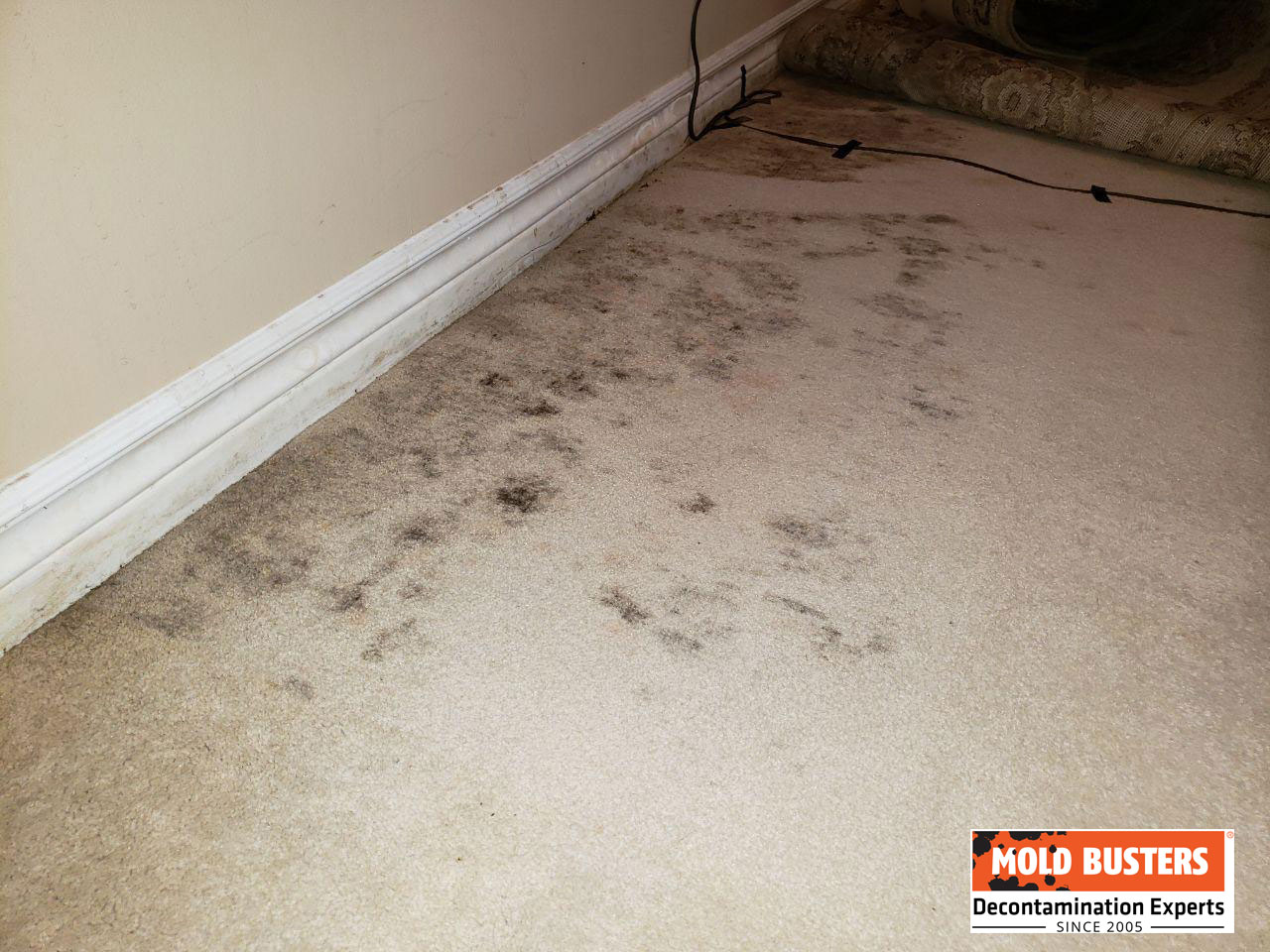
Black mold on carpet is caused by dry air, high humidity, and moisture. As the spores start to grow in humid conditions, they become active and begin to reproduce. Mold will thrive due to these conditions, which can be found in your basement or other low-lying areas of your home.
White Mold On Carpet: How To Get Rid of It
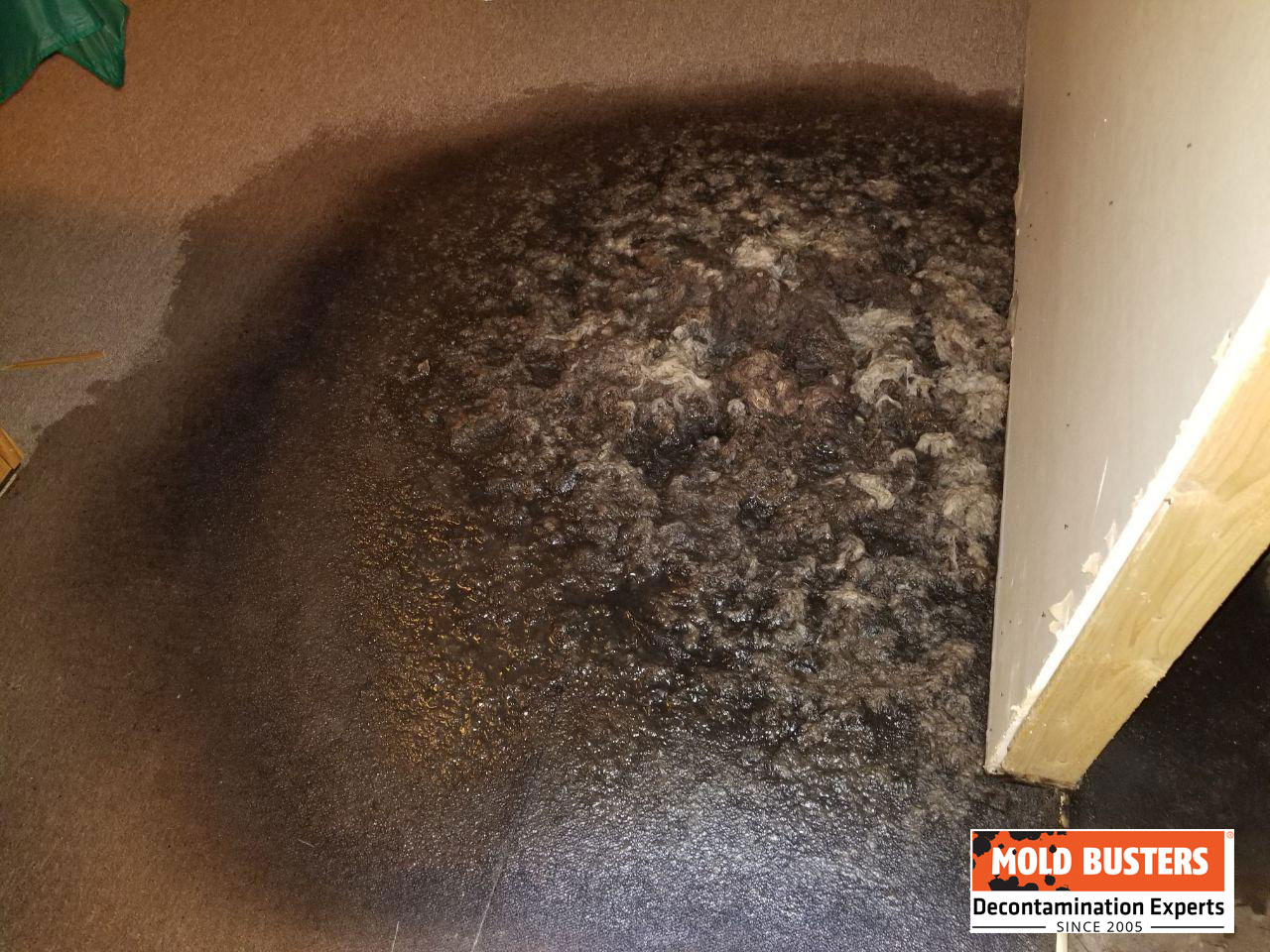
Some intense types of mold can cause stains on carpet. This is caused by the release of spores, which are microscopic cells that reproduce. The release of spores can happen through natural processes, such as rain or high humidity, or through exterior sources like pets and kids playing outside. If these spores land on carpets, they can grow into white mold that may become trapped increases and rug fibers.
Orange Mold on Carpet: What’s the Deal?
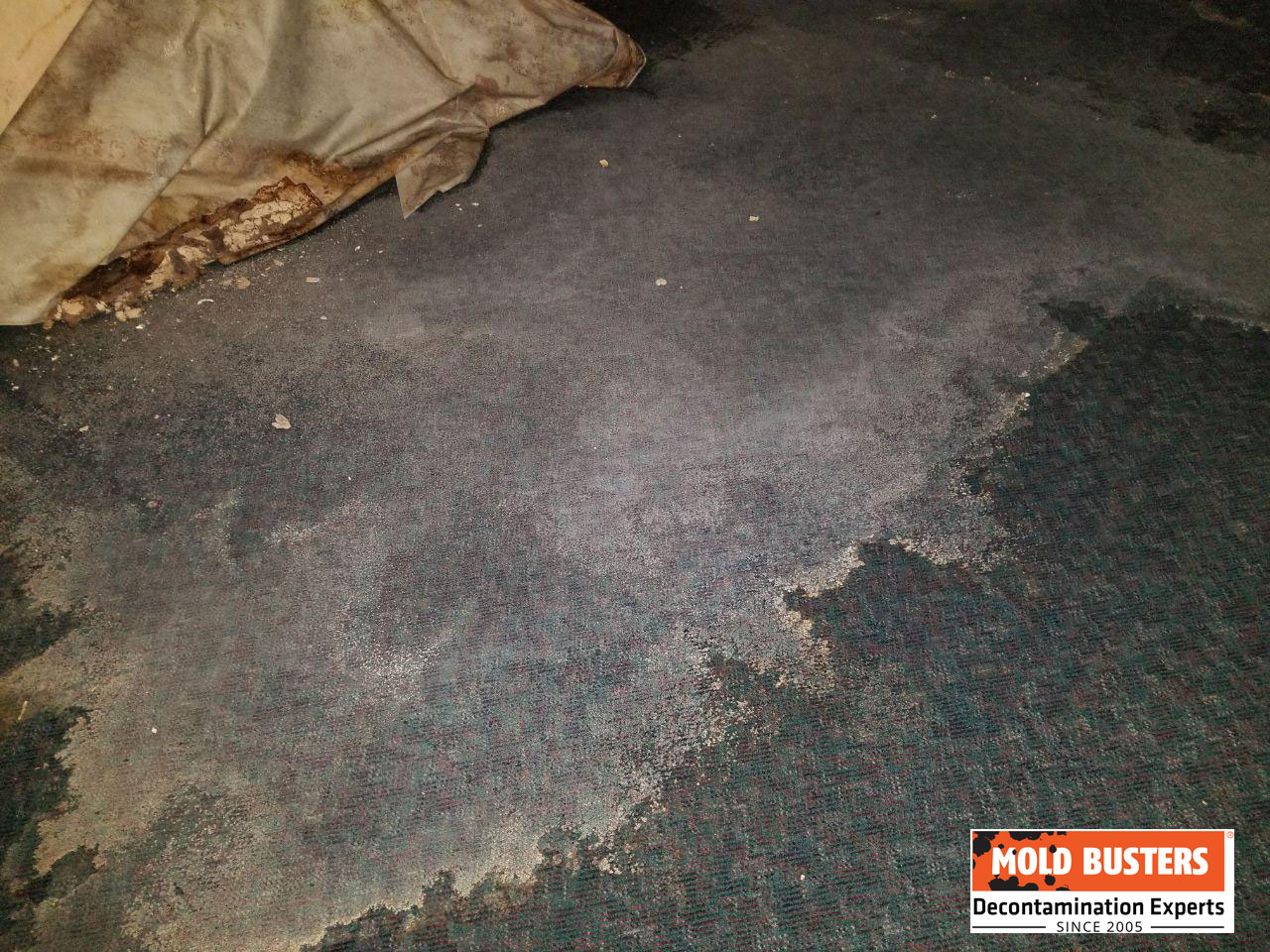
The orange mold on carpet is caused by the high moisture level found in carpets. This mold thrives in moist and humid environments, and it feeds on organic material such as dead skin cells and spores.
Green Mold on Carpet: Main Causes
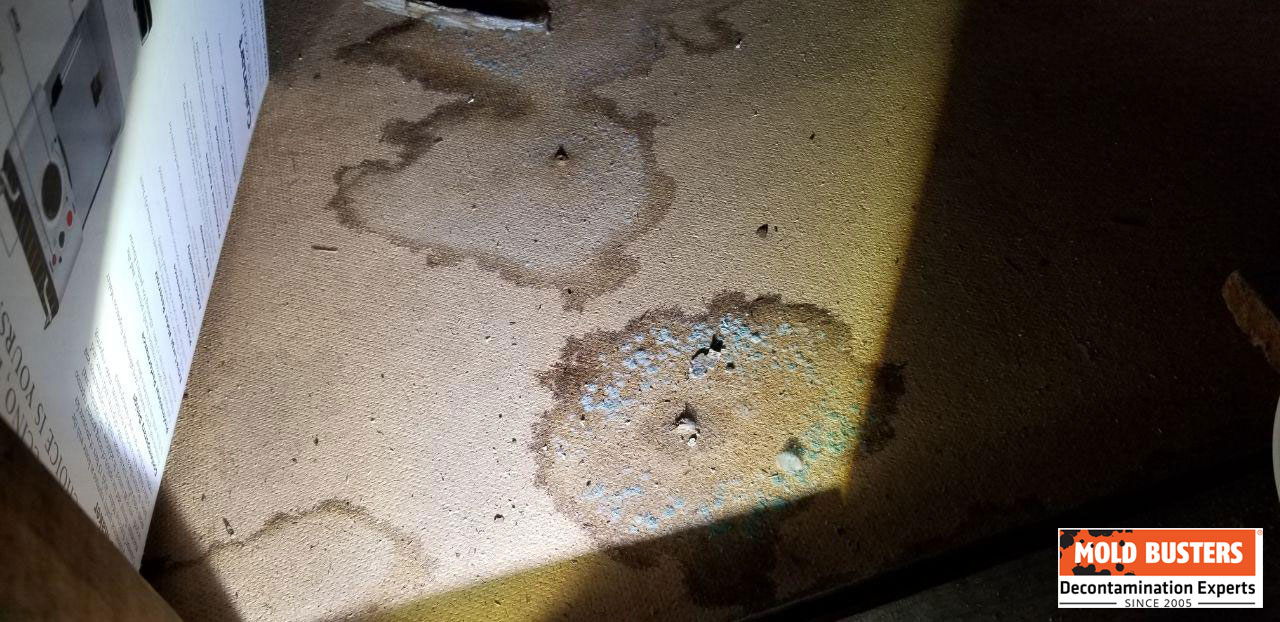
The green mold is a type of fungus that grows in moist areas. The most common cause is when water has been sitting in a carpet for too long and the moisture has caused it to grow. This can be prevented by taking care not to leave any standing water in your carpet, or by having a carpet cleaner come out monthly to extract any excess moisture from the fibers. Also, if your home is humid, it is important to have extractor fans installed near all of your heating units.
How to Protect Your Health from Dirty Carpets
In order to keep you and your family safe from the health risks associated with dirty carpets, it is necessary to perform regular maintenance and cleaning of your home.
The following practices will protect you from the threats posed by dirty carpets and eventually improve the quality of your indoor air.
Be careful where you use wall-to-wall carpeting
Wall-to-wall carpeting has been used by many homeowners to enhance the overall look of their living space. However, while it is an affordable flooring option and makes your home cozier, it can aggravate allergies and cause more serious respiratory diseases.
As we’ve mentioned, your carpet is a breeding ground for mold and mildew. It is also vulnerable to stains, moisture and dampness, and the accumulation of dust, bugs, dirt, and bacteria.
This is why you should make sure not to place carpets all over your home. Avoid carpeting in areas prone to high moisture like your kitchen, bathroom, and laundry room. Also, experts suggest avoiding putting carpets in rooms used by people with asthma as they may exacerbate the condition.
Use a High-Efficiency Particulate Air (HEPA) Vacuum for cleaning your carpet
The National Center for Health Housing recommends vacuuming and cleaning your carpet regularly.
However, regular vacuuming doesn’t mean you’ve eliminated all harmful organisms that contribute to indoor air pollution. In fact, using an ordinary vacuum cleaner will simply rearrange dirt without removing particles hidden deep within your carpet.
Instead, use a High Efficiency Particulate Air vacuum or HEPA vacuum. It filters the air from pet dander, pollen, dust mites, mold, and other harmful particles using a mechanical air filter, thereby restoring freshness to your carpet.
Replace worn and stinky carpets
Some carpets may last for 10 years while others for 30 years. Although you’ve ensured to maintain and clean your carpet to extend its life, it will eventually get old, tarnished, and overused. This calls for a replacement.
A lingering odor from your carpet requires proper cleaning. However, if the odor doesn’t go away even with professional cleaning, it has likely penetrated deep into the carpet pad or subfloor. Believe us, you don’t want to wait for mold to start growing beneath your carpet–replace it early on to avoid massive headaches and expenses.
Old carpets also retain particles and allergens that cause allergic reactions. If you’ve noticed an increase in your allergy symptoms, your old carpet might be the culprit. If this is the case, it’s best to remove and replace it as soon as possible.
Use carpets made of natural fibers
If you’re already planning to update your carpet, make sure to choose a carpet made of natural fibers and materials.
Instead of a large and lavish carpet, which attracts most allergens, a smarter option is a carpet made of cotton, seagrass, sisal, hemp, or other natural materials.
Hire a professional to clean your carpet
A dirty carpet does not just look ugly and smell disgusting, but it also threatens your health due to dust, pet hairs, mold, bacteria and other microscopic organisms that are trapped within its fibres.
If your carpet is not yet too old or worn enough for replacement, doing a deep clean is a great idea.
A professional carpet cleaner will not only remove stains, odors, and dirt but also provide specific solutions to minimize the cause of allergens and pathogens in your carpeted flooring.
Take care of your carpet like you would your body because ultimately your carpet affects your health.
How Do I Prevent Carpet Mold?
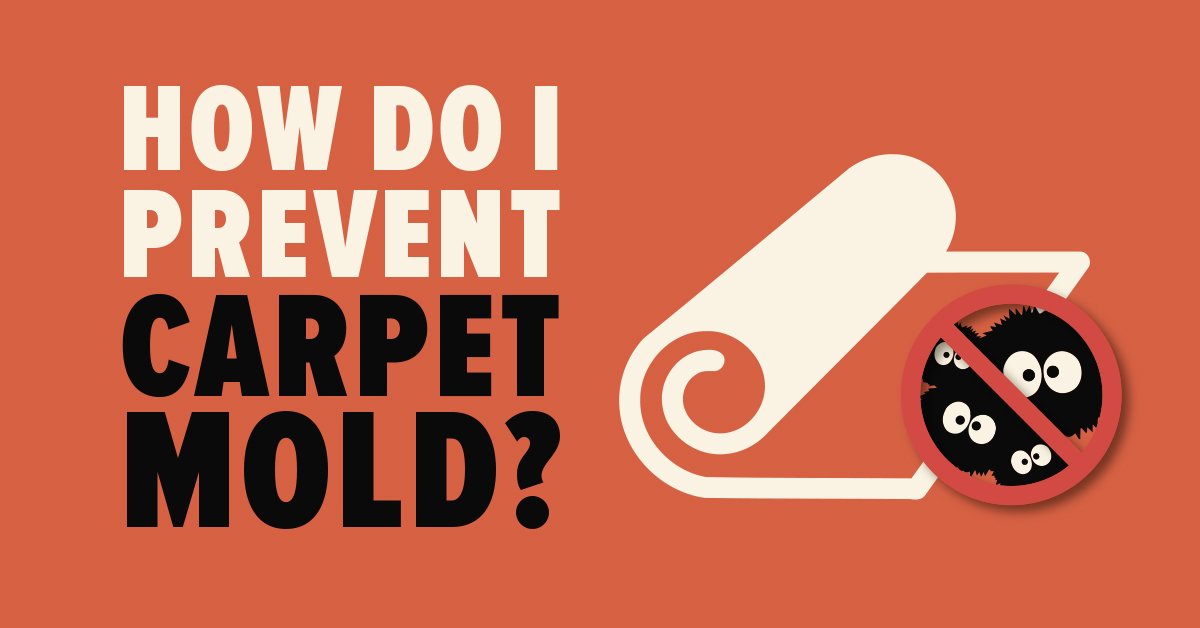
Many of us love decorating our homes with colourful carpets and rugs. Unfortunately, we often overlook the potential danger of carpet mold. Wall-to-wall carpeting and area rugs, in particular, are at high risk. The best way to eliminate a carpet mold problem is to call a professional mold removal company, such as the certified team of technicians at Mold Busters. Moreover, there are ways you can prevent carpet mold from developing in the first place. Our teams in Montreal and Ottawa are always ready to assist you.
Tips to Help You Prevent Mold from Growing in your Carpets and Rugs:
- Avoid using carpets in bathrooms, kitchens, basements, and other areas prone to moisture, wetness, or dampness.
- Minor mold growth on area rugs can be removed with detergent, water, and a steam-cleaning machine. In this case, it’s important to dry the carpet completely after cleaning to prevent the mold from growing back.
- Mold growth in small patches on carpets can also be removed by removing the moldy section of the carpet and replacing it with a new piece of carpeting.
- Reduce the number of furnishings around the moldy carpet. This minimizes the chances of them absorbing moisture, and thus that of further mold growth.
- Any water-damaged furnishings around the carpet such as mattresses or sofas should also be disposed of properly during a carpet mold removal.
- If large areas of carpet become moldy, the best solution is to remove and dispose of the entire carpet or rug.
- Reduce indoor humidity by using dehumidifiers. Relative humidity inside a home should be between 30 per cent and 60 per cent.
- Use high-quality carpets. These days, it’s possible to find solid, rubber-slab carpet padding that has antimicrobial properties. Although it can be expensive, it’s worth it as it is able to protect against mold growth in conditions of high humidity.
- When cleaning carpets, use a vacuum cleaner and avoid getting the carpet wet. If, by any chance, it does come into contact with water or any other liquid, dry it thoroughly.
- If you notice a musty odour or discoloration on your carpet, call for mold testing or air quality testing immediately. Make sure that your samples are sent to an accredited lab for complete analysis.
- Install an effective HVAC (air conditioning) system in rooms that have carpets. Proper ventilation lowers the humidity levels and the temperature.
- Clean your carpets at least once a week to protect against carpet mold growth. Researchers have found that, in addition to moisture, dirt is a big catalyst for mold growth.
- Replace your organic carpeting (made out of wool) with inorganic, man-made carpeting such as nylon or olefin, to help prevent mold growth.
- Find the source of the mold or moisture and fix the problem or eliminate the source – perhaps there is a leaky pipe.
- Remove any wet carpeting immediately and allow it to dry completely. Before placing the carpet back, make sure the floor underneath is dry. HEPA vacuuming, after drying the floor and before putting the carpet back, is also a good idea.
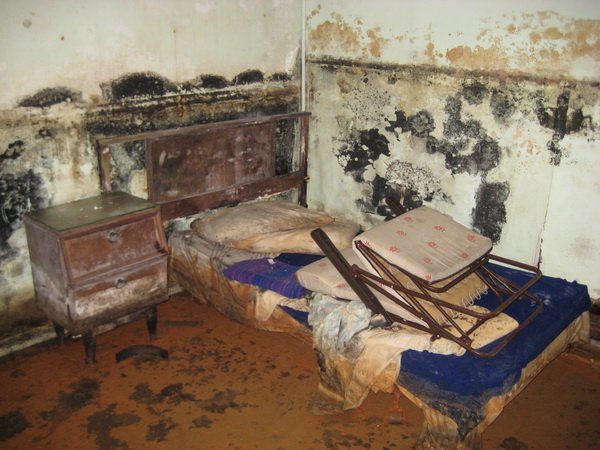
Carpet Cleaning Misconceptions
Cleaning a carpet is simple, right? Maybe, if you use a vacuum cleaner. But even then, you never know how clean it actually is. After all, carpets are made up of thick fibres (often wool, polypropylene, nylon or polyester) that can trap dirt deep down, where it is hard to reach and therefore even harder to clean.
Importance of carpet cleaning is big, because carpets can make you sick if you don’t clean them properly.
So what is the best way to clean your carpet? Moreover, how do you choose a reliable carpet cleaning company? We’ll answer these questions and more in our review of the top carpet-cleaning misconceptions.
1. Vacuuming is enough.
This is probably the most common misconception about carpets. Many people think that just vacuuming their carpet is enough to keep it clean yearlong.
And sure, vacuum cleaning will remove hair, dust, crumbs and other physical dirt, but what it can’t do is extract all the dirt from your carpet. Oh, and it doesn’t remove odours or stains.
Unlike vacuuming, professional carpet cleaning uses steam machines to reach deep into the fibres of your carpet and unlock dirt—even the smallest particles and most stubborn stains don’t stand a chance.
So in addition to vacuuming your carpeting at least once a week, make sure you get it steam-cleaned once a year. Only then will it be completely clean.
2. All carpet-cleaning methods are equally effective.
This is simply not true. There are many cleaning methods and they couldn’t be more different from each other.
- The dry-foam method applies shampoo to your carpet, leaves it to dry and extracts it afterwards. This is not the most effective method, but some carpet-cleaning companies still use it.
- With the dry-chem method, a large cotton bonnet spins from side to side and absorbs the dirt in the carpet. Unfortunately, this method is not too effective either.
- Finally, the dry-compound method spreads an absorbent mixture all over your carpet. Then it brushes it in and extracts it with a vacuum cleaner after it has dried. Once again, however, this procedure is not much better than the previous two.
These three methods will not properly clean your carpet. Instead, they will just leave a dirty residue.
The one and only true method is hot water extraction (or steam cleaning). The process is pretty simple actually. Hot water and a liquid cleaning solution are applied to your carpet and then a wet-vac is used to lift the carpet fibres and extract the water (and dirt) into a wastewater reservoir.
With steam cleaning, you reach the deepest parts of your carpeting and removes all bacteria, dust, dirt, hair and stains.
Apart from cleaning your carpet, the steam cleaner will remove the extra cleaning solution from it as well so that it dries more quickly.
3. All carpet-cleaning companies are the same.
A company that uses any of the dry-cleaning methods mentioned above simply cannot be as efficient as one that uses steam cleaning. If you’ve tried both methods in the past, then you already know the difference. And if you haven’t, we recommend you to carefully check which method your carpet cleaner uses and then decide if you really want to trust them with your carpet.
4. The longer you wait, the better.
If you’ve been putting off getting your carpets cleaned in order to save money, you’re actually wasting more money in the long run. This is because lack of maintenance will make your carpet older sooner. Then, your only option will be to buy a new carpet.
On the other hand, if you get your carpeting cleaned regularly, it will last longer and save you money. So instead of seeing it as an expense, consider carpet cleaning a long-term investment.
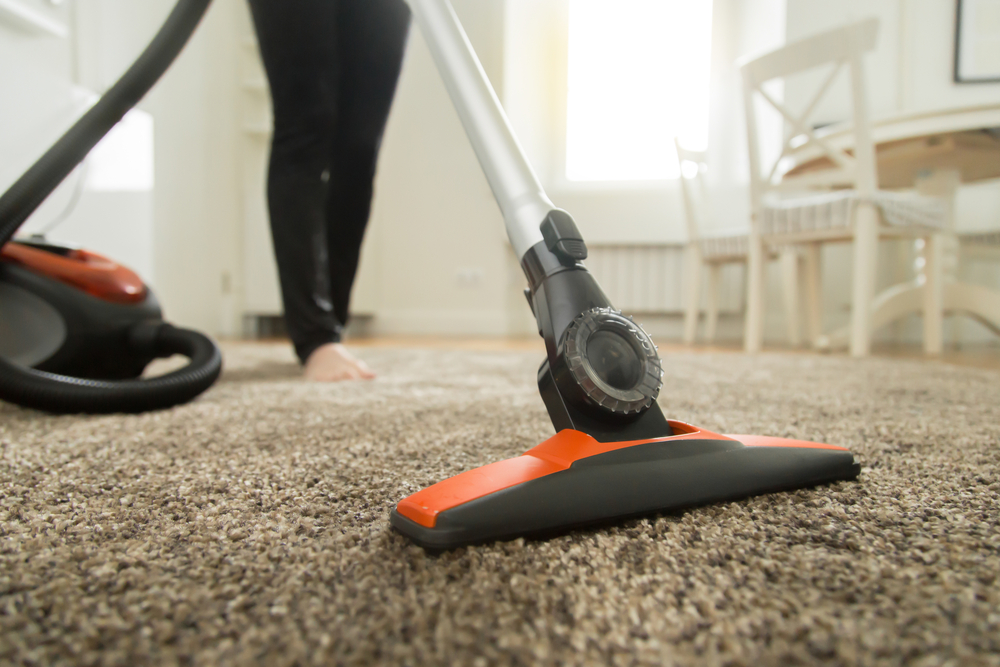
5. You should clean the carpet only when it’s dirty.
Just because you don’t have huge stains on your carpeting doesn’t mean it’s clean. By the time your carpet is visibly and noticeably dirty, it might already be too late.
When it comes to our carpets, we can only see what is on the surface, not what’s deep inside the fibres. Also, bacteria and viruses are microscopic in size so they could be living in your carpets without you ever even knowing.
To make sure your carpet is completely clean, have it cleaned professionally once a year.
6. You can clean your carpets yourself—all you need is a steam cleaner.
While the right equipment is necessary to do the job effectively, it is not the only thing you need. The best companies have both the right equipment and the experts to clean your carpeting properly.
Carpet cleaning professionals are specifically trained and have years of experience cleaning carpets. They know things that the average homeowner does not, from which steam cleaner to use to which carpet shampoo to apply based on the type of carpet you have and how soiled it is.
So if you’re tempted to rent a steam cleaner and attempt a DIY carpet cleaning project, don’t. There’s a reason why professional carpet-cleaning companies exist.
7. You should hire the company that offers the lowest price.
If money is your only concern, then yes—go ahead and spend as little money as possible. But don’t complain when your carpets are underwhelmingly clean or, in the worst case, destroyed.
On the other hand, if you think long term, you should ask around and compare both the prices and the quality of service that companies offer. You will very likely find a company that will make your carpet super clean for just a slightly higher price.
8. You should hire the company that offers the highest price.
Again, this is equally as false as the previous misconception. There are numerous companies that offer to clean your carpets at exorbitant prices.
This doesn’t mean they are much better than the rest. After all, they’re using pretty much the same equipment. They only try to stand out from the rest by charging a lot more.
Ask around for references and people’s experiences with different companies and you will find one that offers the best value for money.
9. Carpet cleaners never provide references.
Every company that is proud of its work will provide references. If they don’t, they may have just started out and don’t have any references or they may have something to hide.
Be cautious and persistent. Don’t let anyone persuade you that references don’t matter. Eventually you will find a company that will gladly provide references to their previous work.
10. All carpet cleaning companies should give you a precise quote over the phone.
As much as you would like to know exactly how much you will have pay for carpet cleaning, a serious company will rarely give you a quote over the phone.
The price will depend on the type of carpet, the amount of dirt and the amount of furniture that has to be moved. None of these can be determined over the phone, so cleaners will have to come to your house to perform an assessment. Only then will they be able to give you an accurate quote.
Mold Busters now offers hot-water extraction for carpet cleaning
There are a surprising number of myths surrounding carpet cleaning. But as always, Mold Busters wants to help clarify those misconceptions. And now, with our brand new carpet-cleaning service, we can make sure that you make the right decision when it comes to your carpets.
If you want us to perform an assessment for your home, give us a call today. We use the most up-to-date hot water extraction method that will leave your carpet as clean as new. When we clean your carpets, you will be surprised by how great it actually looks. You can also take advantage of our virtual inspection service for a preliminary assessment.
FAQ
What does mold look like on carpet?
Mold is a fungus that colonizes dry biofilm, typically on wet cellulose surfaces. It typically appears as light patches on the carpet. The more humid the carpet, the more likely the mold will grow.
Mold can be identified by observing its spores or fruiting bodies, or it may be detected using chemical tests which are either by their color reactions or by the substances they liberate. Mold has a distinctive musty odor which is evident in most cases of obvious contamination.
Can moldy carpet make you sick?
Moldy carpet can cause building occupants to suffer from allergies and other health effects. When water or other liquids get trapped under a porous surface, such as the carpet in a home, they provide an ideal environment for mold growth. The best way to prevent this problem is to thoroughly clean and dry areas where water may pool and the area should be well-ventilated (e.g., by opening windows or using fans).
Can old carpet make you sick?
Some types of carpets can provide a home for certain bacteria that can lead to allergic reactions like asthma. However, while some bacteria may be the culprit, other factors like dust mites or mildew may also play a part in allergies.
What if mold is under carpet?
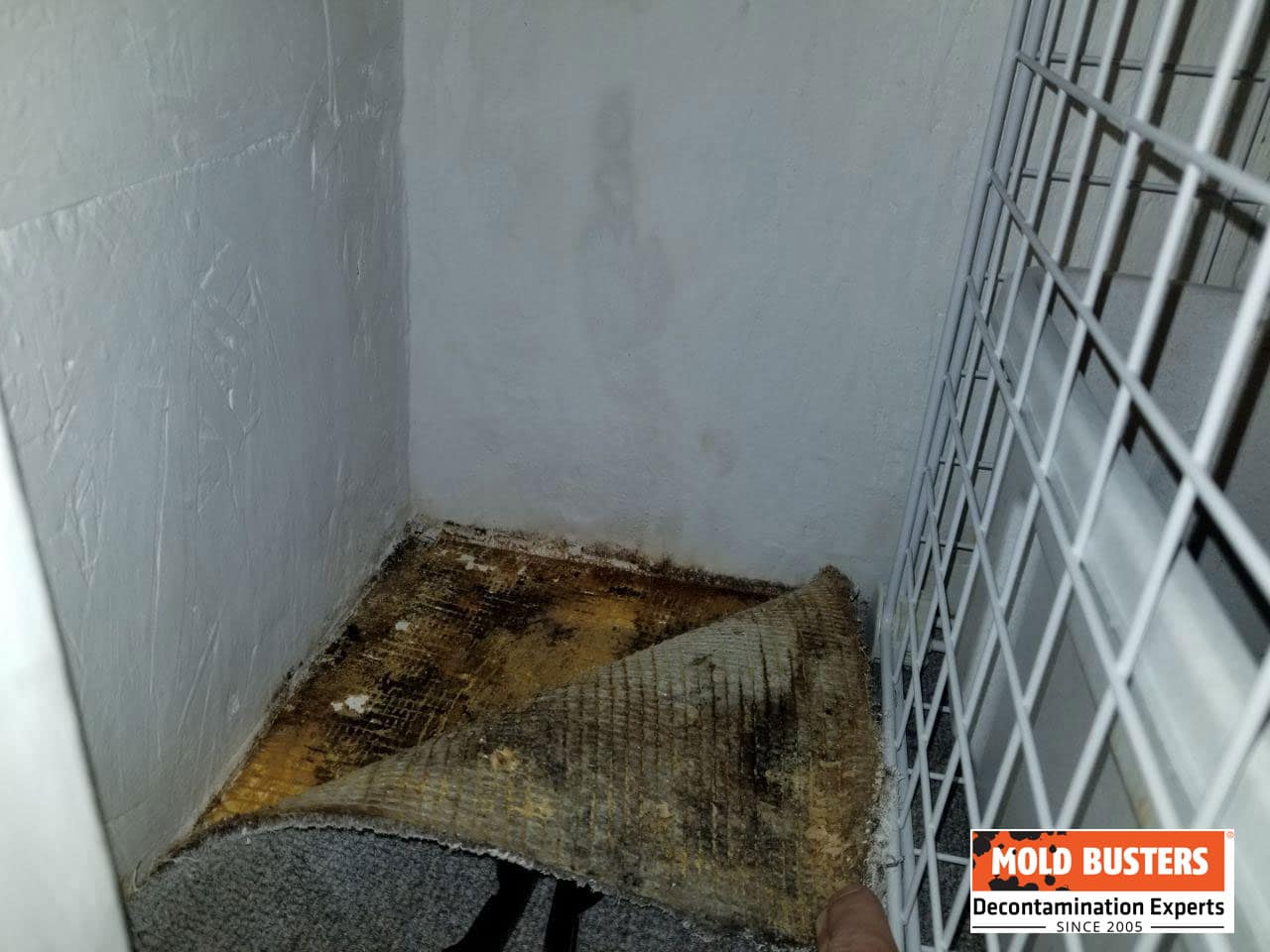
Typically, mold can be found in damp areas, such as kitchens and bathrooms. However, if mold is found under carpet, it may be a sign of leaky pipes or condensation on windows with improper insulation. The most difficult part of removing mold from carpets is getting rid of the mildew spores that often come with it. A steam cleaner or hot water will greatly reduce these particles, which leaves behind a residue that requires an additional cleaning process.

Get Special Gift: Industry-Standard Mold Removal Guidelines
Download the industry-standard guidelines that Mold Busters use in their own mold removal services, including news, tips and special offers:
Published: December 14, 2021 Updated: August 3, 2023

Written by:
John Ward
Account Executive
Mold Busters
Fact checked by:
Michael Golubev
CEO
Mold Busters

